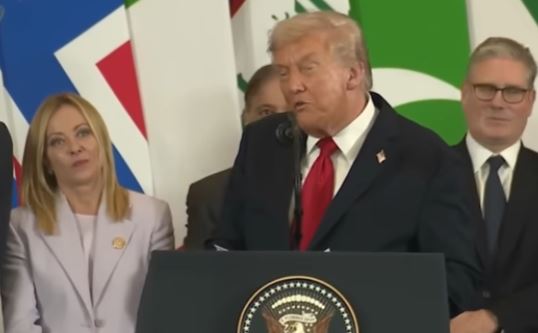A new national survey from Marquette University Law School has found that Americans hold a more favorable view of former President Barack Obama than of President Donald Trump, with the poll registering a net favorability rating of +17 for Obama and −15 for Trump among U.S. adults. The Marquette release, based on interviews conducted September 15–24 with a nationally representative sample of 1,005 adults, lists each modern president from Ronald Reagan onward and reports Obama at 57% favorable to 40% unfavorable, while Trump is at 42% favorable to 57% unfavorable. “The current president, Trump, has a net negative favorability of −15 points, while Joe Biden has the lowest net rating, −24 points,” the release states in its top-line summary, before presenting the table that places Obama well into positive territory and Trump underwater.
Beyond the headline comparison, the Marquette polling memo shows the usual partisan and generational contours but with notable crosscurrents. Among Republicans, Reagan remains the towering figure with a net +75 and Trump follows at +58; among Democrats, Obama is the standout at +79 with Biden at +47. Independents, who often decide close elections, place Obama first at +33 and put Trump last at −45, a gap that helps explain why the overall result tilts toward the 44th president when all adults are considered together. The release summarises the pattern succinctly: “Independents give Obama their highest net rating, +33, followed by Reagan at +14. Democrats also give top marks to Obama at +79… independents and Democrats place Trump last, −45 and −81, respectively.” Those subgroup figures, while not votes, underline how personal images of presidents persist long after they leave office and how a sitting president’s standing can diverge sharply by party.
Marquette’s series situates favorability as a straightforward measure: it is not a job-approval score tied to current policy performance, nor a hypothetical ballot test, but an index of whether respondents view each figure positively or negatively. Within that frame, the poll’s historical table shows Reagan atop the list of modern presidents with a net +28, followed by Obama and then George H. W. Bush at +17. Bill Clinton and George W. Bush cluster at +8, while Biden marks the lowest point at −24. The ordering reflects long-run reputational shifts more than immediate news cycles and indicates that the modern electorate continues to rate Obama well, a through line that has appeared in multiple national series over the past decade. The Marquette designers emphasise that for the earliest presidents on the list, a non-trivial share of respondents select “haven’t heard enough,” but the Obama and Trump images are both fully formed, with minimal “don’t know” responses, which increases the significance of the positive vs. negative balance recorded for each.
The Marquette release arrived against a broader backdrop in which other national series have also put Obama at or near the top of public esteem among living presidents, reinforcing the picture of a durable personal brand. In February, Gallup reported that “of the five living men who have served as U.S. president, Barack Obama receives the highest favorable rating (59%) and Joe Biden the lowest (39%),” with Donald Trump and Bill Clinton around the mid-to-high 40s and George W. Bush at 52%. While the sampling frames and questions differ across organizations, the Gallup snapshot—drawn from telephone interviews with U.S. adults—tracks closely with Marquette’s online panel in its broad ordering, placing Obama comfortably in positive territory and Trump closer to an even split or modestly negative.
